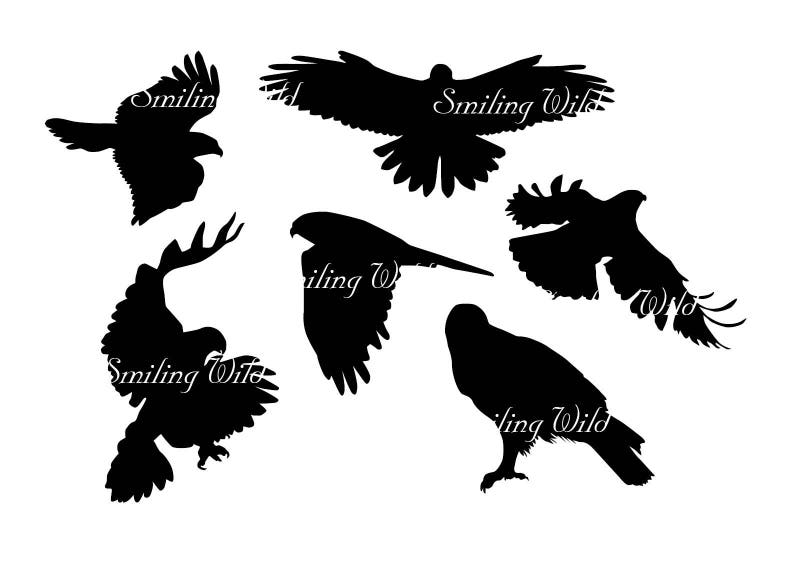

Migratory behavior in this species is significantly influenced by weather, particularly snow cover and food supply. Others migrate relatively short distances, with northern populations tending to move south during the fall. Unlike the related Swainson's Hawk, which migrates long distances, many Red-tailed Hawks are resident. Juvenile birds can add to the confusion instead of a red tail, immatures bird's show narrow brown-and-white bars on their tails.

Some subspecies lack the typical field marks of the species, such as the dark belly band and reddish tail, making for tricky identification challenges. One subspecies in western North America, the Harlan's Hawk, has an all-dark body and is considered a separate species by some ornithologists. There are 14 recognized subspecies of Red-tailed Hawk, which vary most noticeably in color and shade. (Audio by Tayler Brooks XC34863, accessible at and Paul Marvin XC165314, accessible at Highly Heterogeneous Hawk It's used as a substitute so often that most people don't know what a Bald Eagle really sounds like! You can compare the two below. Enter the Red-tail, whose call has been deemed macho enough to substitute for the eagle's. In reality, the Bald Eagle has a chittering, high-pitched call, which apparently doesn't sound imposing enough to go along with its tough appearance.
#Red tailed hawk silhouette tv
The Red-tailed Hawk's long, raspy call is often heard on TV and in movies when a Bald Eagle is shown. This big hawk is also a talented voiceover artist, standing in for one of the most often-seen raptors on television. Red-tailed Hawks have some unique features as well: a belly band formed of dark, vertical streaks, dark patagial markings (the patagium is the area running along the leading edge of the underwing), and the eponymous reddish-brown tail. This handsome raptor is the epitome of its genus, Buteo, with its wide wings, short tail, and chunky build. It often thrives in suburbia and is seen along roadsides perched atop tall poles.
#Red tailed hawk silhouette iso
Next three images, ISO 800, f8 1/2000.One of the largest and most common birds of prey in North America, the Red-tailed Hawk is a familiar sight even to nonbirders. Images made with a Canon 5Div, 400 DO II lens+2x telextender, aperture priority setting. Whatever purpose rousing may have, it is fun to capture it in a photograph. Others think that this may just be an indication of the hawk’s nervous energy. Others think that it is to shake dust and parasites off the bird’s wings. Some say that it is a way to align flight feathers in their correct position before flying. No one really knows why these birds rouse. In these next two photos I caught the youngster rousing.Ī “rousing” hawk shakes out its plumage, usually seconds before it flies. Both hawks share the same body shape and have identically shaped heads and faces. However, these differences are essentially superficial. The brilliant white plumage and contrasting dark markings on the youngster’s breast and abdomen are typical of a very young Red Tail. Now, here’s a juvenile bird - probably about 9 or 10 months old - that I also photographed very recently.Īs I’m sure you’ll agree, there’s a rather striking plumage difference between the two hawks. This Red Tail is typical of what we see in the southwestern United States, with its brown head and pale and lightly marked breast and abdomen. Here’s an adult bird, one that I photographed a few days ago. Still, their morphology is identical to that of adult Red-tailed Hawks. Moreover, juvenile and immature Red-tailed Hawks manifest significant plumage differences from adults and they lack the adults’ solid red tails. All Red Tails, regardless of their plumage, share a familiar blocky shape and broad, paddle-shaped wings. Identifying a Red Tail may often be as much a matter of being familiar with the species’ morphology as it is recognizing plumage. There are often plumage similarities among adult birds in a given part of the country, but even with that there may be considerable variation from one bird to the next. As I’ve noted, there is no universal standard plumage for these birds although most adults do have red tails. In the past I’ve posted about identifying Red-tailed Hawks. You may enlarge any image in this blog by clicking on it.


 0 kommentar(er)
0 kommentar(er)
